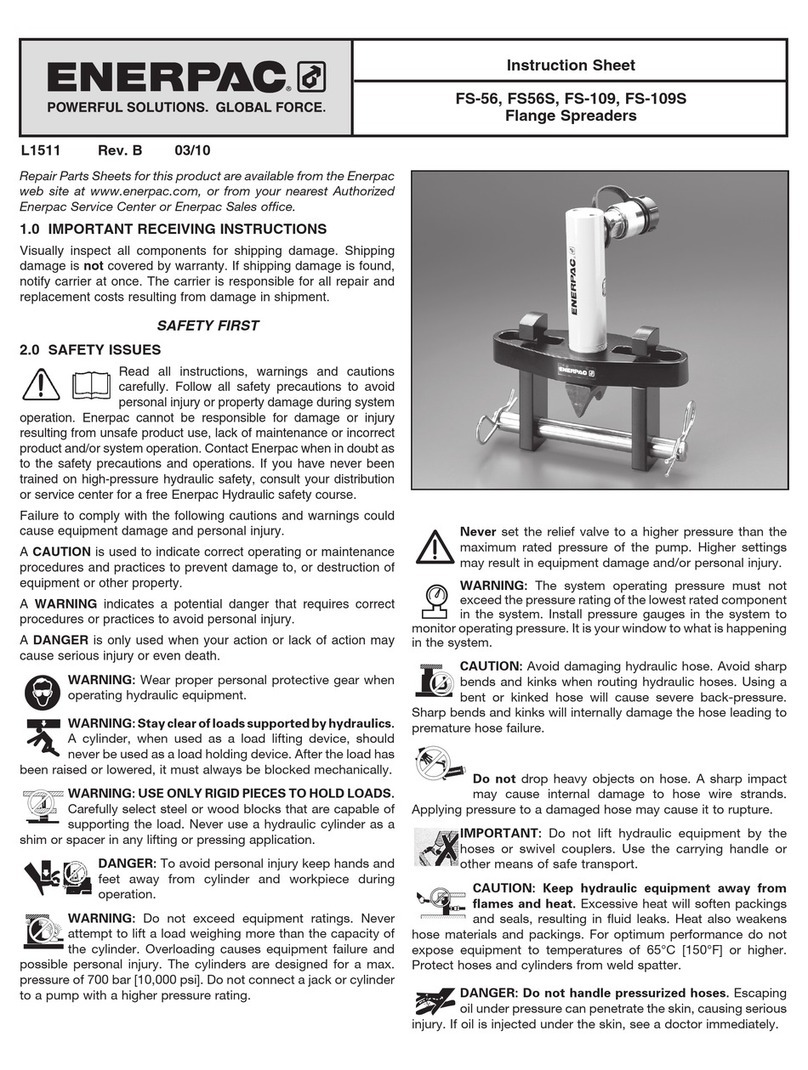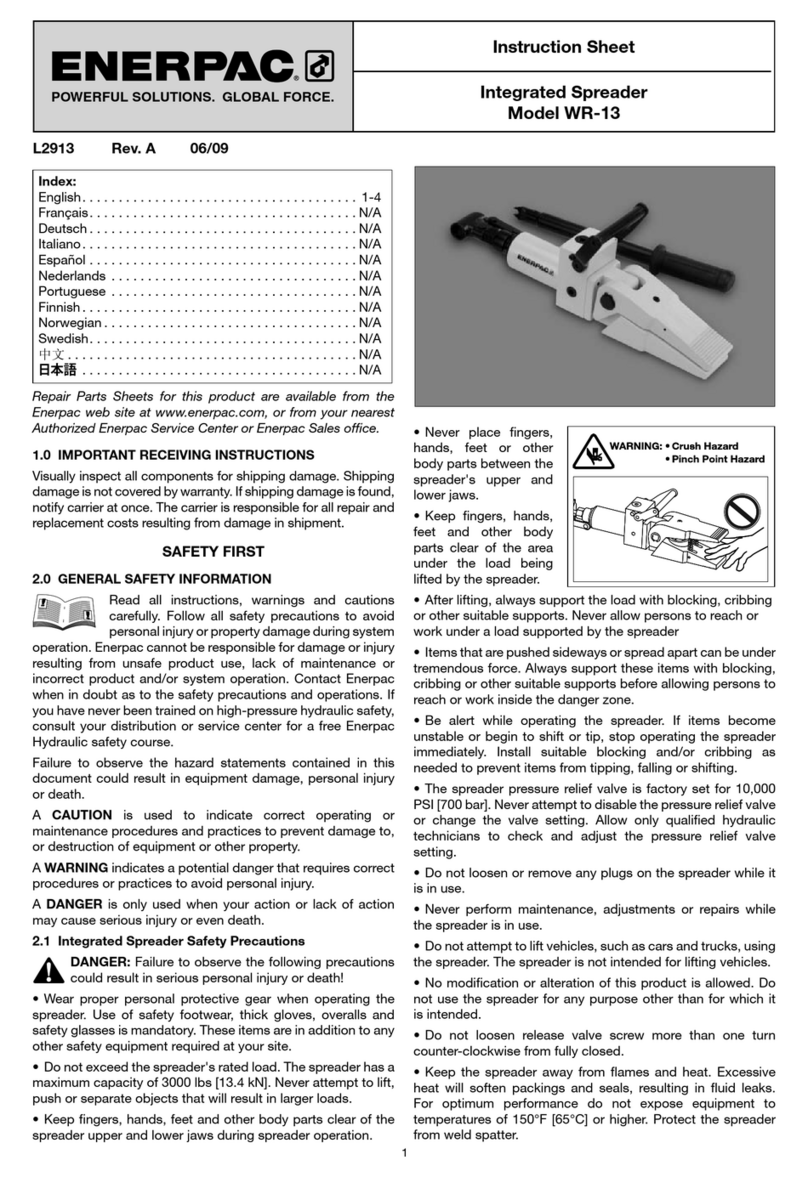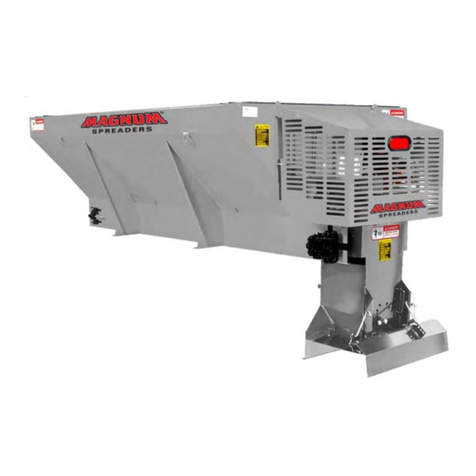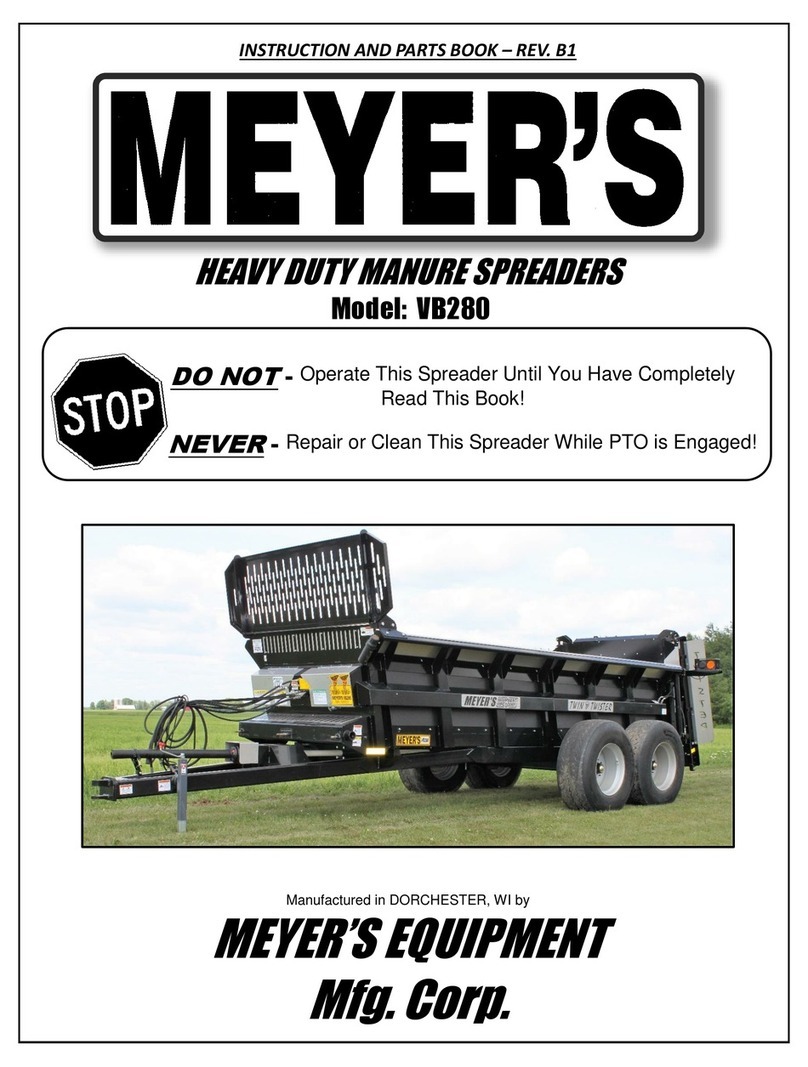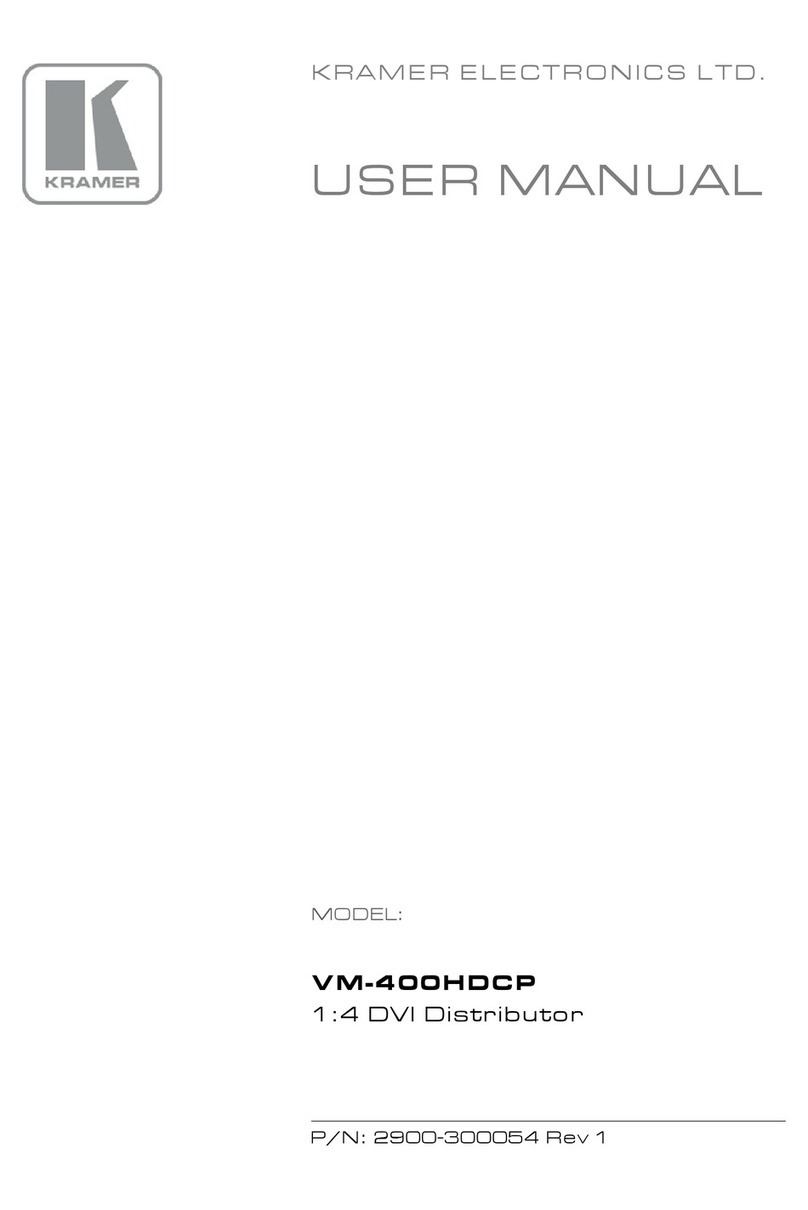
L4388 .3
1.0 INTRODUCTION
Overview
Enerpac Wedge Spreaders use the integrated wedge
concept. They are used to spread flanges in order to
create space for cleaning and repairing flange surfaces
and gasket replacement.
The Enerpac wedge spreader FSM8 is a manual operated
tool, and is actuated by a 22mm (0.87in) ratchet spanner
The Enerpac FSH14 is a hydraulic operated tool, that is
actuated by an Enerpac RC102 single acting cylinder.
The FSH14 must be powered by an Enerpac hand pump.
The FSC14 is actuated by an integral pump.
Application
Wedge spreaders can be used for: pipe and flange repair,
removing of elbows, couplers, gasket and metal seals
replacement, maintenance/ replacement of valve and
control equipment.
Delivery Instructions
Upon delivery all components must be inspected for
damage incurred during shipping. If damage is found the
carrier should be notified at once. Shipping damage is
not covered by the Enerpac warranty.
Warranty
• Enerpac guarantees the product only for the purpose
for which is intended.
• Refer to the Enerpac Global Warranty document for
terms and conditions of the product warranty.
Any misuse or alteration invalidates the warranty.
• Observe all instructions as communicated in this
manual.
• When replacement parts are needed, use only genuine
Enerpac replacement parts.
Modification to any part of the equipment outlined in this
manual should not be attempted, nor any component
part be replaced without first consulting Enerpac.
Modifications may render the equipment dangerous.
Component parts are each rated to suit the demands
of the overall equipment design and replacement with
similar items without provenance may lead to unexpected
and dangerous accidental features.
If any equipment abuse is evident, the warranty will be
invalidated and Enerpac will not be made responsible
for an injury due to misuse or failure to comply with the
above safety notes.
Part Replacement
Check the Repair Parts Sheets (RPS), available at
www.enerpac.com, to order replacement parts when
required.
Conformance to National and International Standards
Enerpac declares that the product(s) have been tested
and conforms to applicable standards and the product(s)
are compatible to all EU and UK Requirements.
Copies of the EU Declaration as well as the UK Self-
Declaration are enclosed with each shipment.
2.0 SAFETY
Read all instructions carefully. Follow all recommended
safety precautions to avoid personal injury as well as
damage to the product and / or damage to other property.
Enerpac cannot be responsible for any damage or injury
from unsafe use, lack of maintenance, or incorrect
operation. Do not remove warning labels, tags, or decals.
In the event of any questions or concerns arising, contact
Enerpac or a local Enerpac distributor for clarification.
If you have never been trained on high-pressure hydraulic
safety, consult your distributor or service center for
information about Enerpac Hydraulic Safety Courses.
This manual follows a system of safety alert symbols,
signals, words, and safety messages to warn the user of
specific hazards. Failure to comply with these warnings
could result in death or serious personal injury, as well as
damage to the equipment or other property.
The Safety Alert Symbol appears
throughout this manual. It is used to alert
you to potential physical injury hazards.
Pay close attention to Safety Alert Symbols
and obey all safety messages that follow this symbol
to avoid the possibility of death or serious injury.
Safety Alert Symbols are used in conjunction with certain
Signal Words that call attention to safety messages or
property damage messages and designate a degree or
level of hazard seriousness. The Signal Words used in
this manual are DANGER, WARNING, CAUTION, and
NOTICE.
Indicates a hazardous situation that, if not
avoided, will result in death or serious personal injury.
Indicates a hazardous situation that, if not
avoided, could result in death or serious personal injury.
Indicates a hazardous situation that, if not
avoided, could result in minor or moderate personal
injury.
Indicates information considered important,
but not hazard related (e.g. messages related to property
damage). Please note that the Safety Alert Symbol will
not be used with the signal word.
These tools conform with
the requirements for
CE and UKCA.
•FSM8 •FSH14 •FSC14
WARNING
CAUTION






